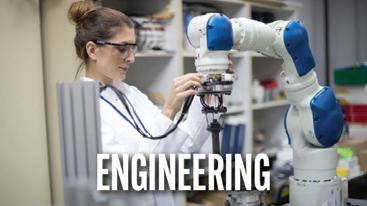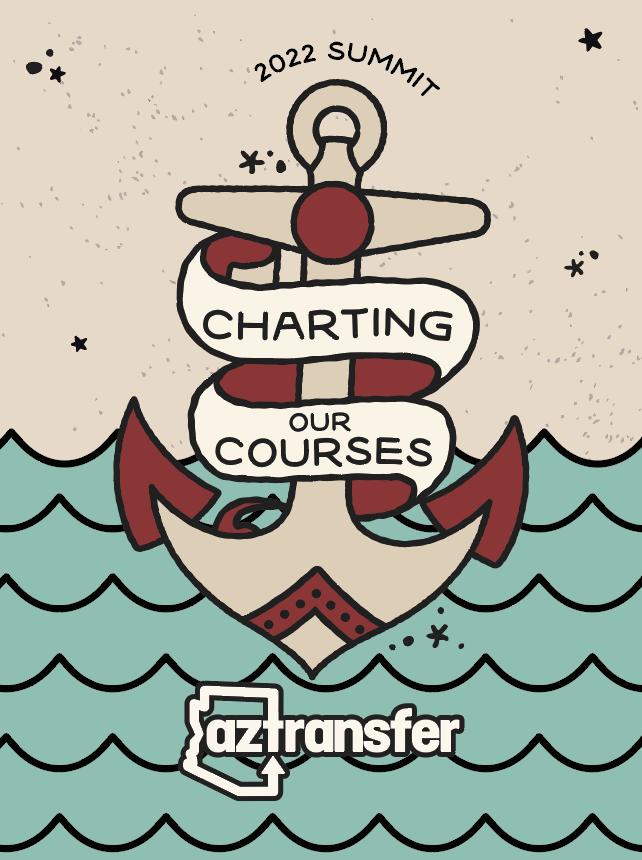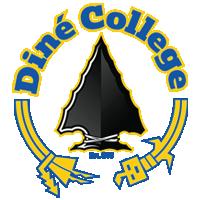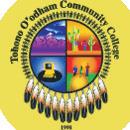CHARTING OUR COURSES
2022 Annual Report on Articulation and Transfer for Arizona Postsecondary Education



The AZTransfer Steering Committee is the coordinating body for the statewide articulation and transfer system (AZTransfer). It provides oversight of curricular alignment among public and tribal post-secondary educational institutions and helps ensure that students are appropriately prepared and have the support services required to pursue and complete a post-secondary degree program. A major goal of the AZTransfer Steering Committee is to assist with increasing the number of Arizona students who successfully complete a baccalaureate degree.
The AZTransfer Steering Committee was established in part by the Transfer Articulation Task Force Report of 1996. The Arizona Transfer System is overseen by the AZTransfer Steering Committee and includes the people, systems and infrastructure designed to ensure “…that community college students may transfer to Arizona public universities without loss of credit towards a baccalaureate degree.” (ARS 15-1824).
*Representative is also a member of the AZTransfer Executive Committee
MARK DENKE* ARIZONA BOARD OF REGENTS ANNE JONES ARIZONA STATE UNIVERSITY JOANN CHANG ARIZONA WESTERN COLLEGE MARY KAY GILLILAND* CENTRAL ARIZONA COLLEGE JAMES PEREY COCHISE COLLEGE NATE SOUTHERLAND COCONINO COMMUNITY COLLEGE GERALDINE GARRITY DINÉ COLLEGE SUSAN WOOD EASTERN ARIZONA COLLEGE WENDY WEEKS PIMA COMMUNITY COLLEGE OFELIA LIZ ZEPEDA TOHONO O’ODHAM COMMUNITY COLLEGE GREG HEILEMAN* UNIVERSITY OF ARIZONA DIANE RYAN* YAVAPAI COLLEGEFOR MORE THAN 25 YEARS, academic leaders from each of Arizona’s public postsecondary institutions have collaborated to support transfer student success. Known as the AZTransfer Steering Committee, this coordinating body ensures Arizona’s students have access to efficient, seamless, and simple ways to transfer from a community college to a university in Arizona.
Born out of legislation passed in 1996, the AZTransfer Steering Committee works to fulfill a promise to provide high-quality educational pathways that lead to baccalaureate degree completion for all Arizonans. This report highlights services and results from the 2021-2022 academic year that deliver on that promise.

College degree pathways are accessible to all Arizonans.
The AZTransfer Steering Committee, an organization of academic leaders, supports successful application of transfer credits leading to degree completion for students in all public and tribal higher education institutions in Arizona.
The decisions and actions of the AZTransfer Steering Committee demonstrate our:
• Purpose is to promote and support student academic success;
• Leadership is transparent, collegial, collaborative, and proactive;
• Decision making is data-informed and outcome-focused;
• Fiscal stewardship is financially responsible and goal-oriented.
AZTransfer manages and supports the Arizona Transfer System and the faculty, staff, and students who utilize it. AZTransfer is structured with four pillars of service– data reporting, systems development and administration, strategic communications, and learning and program development.

The Arizona State System for Information on Student Transfer (ASSIST) is a relational database containing enrollment and degree information on students attending Arizona’s public universities and community college districts.
AZTransfer produces a variety of tools and resources designed to ensure AZTransfer institutions can efficiently manage the Arizona Transfer System and promote it to their students.

AZTransfer’s strategic communications efforts ensure stakeholders are informed about the data, services, tools, training, and events offered by AZTransfer. Branding and user experience are key focuses of the strategic communications plan.

AZTransfer provides comprehensive training and technical support to its numerous user groups. Training topics include workshops on utilizing our tools, ATF faculty training, and facilitator training.

AZTransfer relies on a statewide network of nearly 2,000 people. From faculty, to academic advisors, to registrars and graduation technicians, it takes a lot of people in a lot of places to support and maintain the Arizona Transfer System. Each Articulation Task Force (ATF) is comprised of a minimum of one representative from each college and university. Each institution also appoints an AZTransfer facilitator who is considered their institution’s curriculum expert. AZTransfer depends on facilitators to help manage the catalog, curriculum, and faculty at their institution.












































Articulation Task Forces (ATFs) are the heart of AZTransfer’s faculty-driven transfer model. Each fall, 1,367 faculty in 43 academic disciplines convene to evaluate course transferability and discuss curricular alignment. The outcome of these meetings provides the content for the tools and resources on AZTransfer.com that students and advisors use to plan a seamless transfer.

Work performed through the Articulation Task Force network is the foundation of the Arizona Transfer System. The components of the system work together to help students plan a seamless transfer without loss of academic credit. Students build a transfer degree plan by completing the Arizona General Education Curriculum (AGEC), common courses, and electives, and supplement this with credits earned through dual enrollment and exams.
The Arizona General Education Curriculum (AGEC) is a foundational block of coursework completed at an Arizona community college. The AGEC consists of 35-37 credit hours of courses in English, math, social and behavioral sciences, physical and biological sciences, and arts and humanities. Through Articulation Task Forces, faculty determine which courses fulfill the requirements at their respective institutions and maintain transferability.
Common courses are lower division courses that apply toward a mapped bachelor’s degree program. These courses are reviewed annually at each Articulation Task Force meeting to verify equivalency and applicability.
Associate and bachelor’s degrees are aligned within each ATF academic discipline. The transfer system maps these degrees for majors offered at two or more of Arizona’s public institutions.


The AZTransfer Summit is a statewide convening of all AZTransfer institutions and stakeholders. The Summit provides transfer professionals the opportunity to network, develop new skills, and share best practices in transfer and education attainment. Participants leave the Summit renewed and inspired to continue contributing to the success of the Arizona Transfer System.
The 2022 Summit was held March 24-25 at the We-Ko-Pa Casino Resort.


9,718
10,355 2018-2019 10,176 2019-2020 10,065 2020-2021
17.6% 2018-2019 18.5% 2019-2020 20.3% 2020-2021
of university new freshmen entered with Arizona community college credits of university graduates had credit from an Arizona community college (2020-2021) 54.2% 2017-2018 52.6% 2018-2019 51.1% 2019-2020



Total number of new transfer students from Arizona community colleges to ASU, NAU, or UArizona
University new freshmen entered with Arizona community college credits
Six-year graduation rate of new transfer students who entered with an associate’s degree
Students with 12 or more Arizona community college credits who entered an Arizona public university as new transfers in a fall or spring semester. Students may have additional transfer hours from other 2-year or 4-year postsecondary institutions.
Students with any Arizona community college credits who entered an Arizona university as new freshmen in a fall or spring semester.
Reports university graduation rate after six years for new transfer students from Arizona community colleges who entered ASU, NAU, or UArizona. Student cohort includes students who entered an Arizona university as new transfers in a fall or spring semester and had completed an associate’s degree. Percents reflect cumulative counts for students graduating from a university, and receipt of undergraduate degree from any Arizona public university. One year is an academic year (fall, spring, summer) for the entire cohort.
New Transfers Report, Page 1
New Freshman with AZCC Credits, Page 1
Graduation Rate of New Transfers Report, Page 4
University graduates with credit from an Arizona community college (2020-2021)
Baccalaureate degree recipients at an Arizona public university with 12 or more credits from an Arizona community college who entered as new transfers in a fall or spring semester. Students may have additional transfer hours from other 2-year or 4-year postsecondary institutions.
Baccalaureate Degree Report, Page 1
Five-year increase in minority baccalaureate degree recipients who were new transfers
The five-year rate of change in baccalaureate degree recipients categorized as minorities at an Arizona public university with 12 or more credits from an Arizona community college who entered as new transfers in a fall or spring semester. Students may have additional transfer hours from other 2-year or 4-year postsecondary institutions.
Baccalaureate Degree Report, Page 1
Number one major of new transfer students
New transfer students who entered with 60 or more credits
Most popular major at the Arizona public universities for transfer students with 12 or more Arizona community college credits who entered as new transfers in a fall or spring semester.
Students who transferred from an Arizona Community College to an Arizona public university with 60 or more credit hours.
New Transfers Report, Page 3
New Transfers Report, Page 1
Course evaluation and alignment is the cornerstone of AZTransfer’s work. The Arizona Course Equivalency Tracking System (ACETS), is AZTransfer’s internal system to aid faculty in determining course transferability. Using ACETS, community college faculty can submit information about their courses and route it to university faculty for evaluation. This report provides a quick overview of the transferability of Arizona community college courses to ASU, NAU, and UArizona as reported in 2021-2022.
Arizona public universities evaluated 16,444 Arizona community college courses.
There are 1,228 Arizona community college courses that have direct equivalency to all three Arizona public universities.
14,837 courses were transferable as departmental elective or elective credit.
105 courses were not transferable to any Arizona public universities.
This report summarizes dual enrollment student activity from the period 2010-11 to 2020-21.
Arizona community colleges have served 199,212 dual enrollment students since 2010-11.
Of dual enrollment students, 42% subsequently enrolled at ASU, NAU, or UArizona.
Since 2010-11, 95% of Arizona dual enrollment students received a grade of “C” or better.
The top major for dual enrollment students who earned a bachelor’s degree was business. Biological and biomedical sciences, health professions, engineering, and education round out the top five.
From 2010-11 to 2020-21, the number of high schools offering dual enrollment has risen from 141 to 298.
Since 2010-11, students have enrolled in 677,505 dual enrollment courses, totaling nearly two million credit hours.
This graph shows the numbers of new university freshmen at ASU, NAU, and UArizona who received an associate degree from an Arizona Community College prior to entry.
NOTE: Some degrees are still being conferred.
This graph shows the numbers of new university freshmen at ASU, NAU, and UArizona who received an AGEC from an Arizona Community College prior to entry.
NOTE: Some degrees are still being conferred.
Arizona’s community colleges are contributing to university degree attainment in more ways than one. This data indicates the total number of students who entered ASU, NAU, and UArizona with credits from an Arizona community college. It is broken down by how many students were traditional transfer students entering with 12 or more community college credits and how many were new freshmen with any amount of community college credit.
*Data is unavailable for Diné College and Tohono O’odham Community College. These institutions currently do not send data to ASSIST.


This graph shows the graduation rate of new transfer students in the 2015-16 cohort to ASU, NAU, and UArizona from Arizona Community Colleges. Full-time students enrolled in 12 or more credit hours as of the21st day of the entering semester. Part-time students enrolled in fewer than 12 credit hours.

A glimpse at AZTransfer’s focus and goals for the 2022-2023 academic year.
IMPLEMENT THE RE-IMAGINED ARIZONA GENERAL EDUCATION CURRICULUM
AZTransfer leaders will develop a plan to implement the re-imagined AGEC statewide.
EMBARK ON A SELF-STUDY OF THE CONTINUED EFFICACY OF THE ARIZONA TRANSFER SYSTEM
The AZTransfer Steering Committee will look critically at the Arizona Transfer System’s services and structure to affirm areas of strength and identify opportunities for growth.
INNOVATE THE MANAGEMENT OF THE ASSIST DATA WAREHOUSE
AZTransfer will seek a long-term solution to sustain and support transfer data management through the ASSIST data warehouse.
